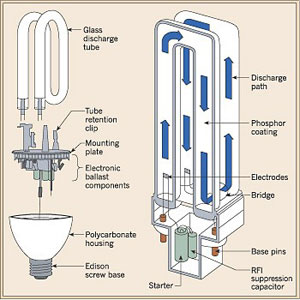

Unlike Edison’s carbon-filament bulb, tungsten bulbs aren’t sequestered in a gas-free vacuum, but rather in vacuum-sealed hard glass filled with an inert gas, such as argon. Since then, tungsten has been exclusively used to construct incandescent bulbs. Tungsten has an astonishing melting point of around 3400K, which allows us to heat it to at least 3000K, a temperature at which the luminosity produced is staggering. In 1904, however, carbon and platinum filaments were replaced by tungsten filaments. His patented technology was manufactured and distributed to entire cities.

His heat-treated carbon bamboo filaments would cause the bulb to glow for more than 1000 hours! Edison is credited with the invention of the bulb because his model was viable for commercial use. This delays evaporation and therefore prevents the blackening of the bulb.Įdison used the same construction, but with minor improvements.

What’s more, the vacuum ensures that the carbon atoms don’t react with any gas, thus stretching the filament’s life. When a carbon filament is subjected to electricity in a vacuum enclosed in glass, it burns much brighter. The evaporation would eventually cause the platinum to exhaust. Furthermore, as the filament was heated, the platinum would evaporate and stick to the insides of the glass dome, blackening it entirely. However, while the heated filament didn’t melt, it wasn’t bright, nor did it last long enough to be commercially sold. This resistive heating is analogous to frictional heating and is technically called Joule heating.Īlso Read: How Does A Light Bulb Work? The “Yellow” Bulb Metals like platinum glow when subjected to electricity due to the thermal energy they produce when their electrons, driven by the electric field, randomly collide with the surrounding ions. The first construction consisted of a platinum wire in one, for the metal exhibits a very high melting point. The ideal bulb would be cheap to construct, it would glow bright white for more than a thousand hours, while dissipating the minimum amount of undesired heat.Īs time passed, the lone wire was soon sheltered by a glass dome. Their expectations were no doubt quixotic. This was truly revolutionary. Over the course of the following century, what inventors were searching for was a construction that was cost-effective and was able to emit intense light for hours, but at a minimum expenditure of energy.


 0 kommentar(er)
0 kommentar(er)
